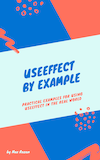Automatically testing for accessibility (a11y) issues with jest-axe
Hey, you! Does your project have jest already installed?
Do you wish management would care more about accessibility but just can't get them to invest or pay attention?
A few design systems I've worked with had the following code to prevent app-wide accessibility regressions, and it's so simple yet powerful that I had to share.
import React from 'react';
import { render } from '@testing-library/react`;
import { axe, toHaveNoViolations } from 'jest-axe';
expect.extend(toHaveNoViolations);
function AccessibleForm() {
return (
<form>
<label htmlFor="email">Email</label>
<input id="email" placeholder="email" />
</form>
);
}
test('accessible forms pass axe', async () => {
const { container } = render(<AccessibleForm />);
expect(await axe(container)).toHaveNoViolations();
});
Credit to Kent C. Dodds' TestingJavaScript.com course for the above snippet
With a few lines of code, auditing your entire design system for accessibility issues suddenly becomes surprisingly doable.
Without @testing-library/react, the code is more or less the same. Using Enzyme, you mount() your component, and pass it to jest-axe to validate.
It's worth noting that while this can find issues with inaccessible HTML, it doesn't guarantee your components are actually accessible. To do that, you'll want to involve actual people with disabilities involved in your research. For more information about jest-axe, see the GitHub repo.
Further reading
Google's actually has a pretty comprehensive article on auditing accessibility at https://web.dev/accessibility-auditing-react/ - however it mainly touches on catching issues via eslint or while running the application in development, rather than using your test suite.
(Shameless plug for the useEffect book I wrote below)
Tired of infinite re-renders when using useEffect?
A few years ago when I worked at Atlassian, a useEffect bug I wrote took down part of Jira for roughly one hour.
Knowing thousands of customers can't work because of a bug you wrote is a terrible feeling. To save others from making the same mistakes, I wrote a single resource that answers all of your questions about useEffect, after teaching it here on my blog for the last couple of years. It's packed with examples to get you confident writing and refactoring your useEffect code.
In a single afternoon, you'll learn how to fetch data with useEffect, how to use the dependency array, even how to prevent infinite re-renders with useCallback.


